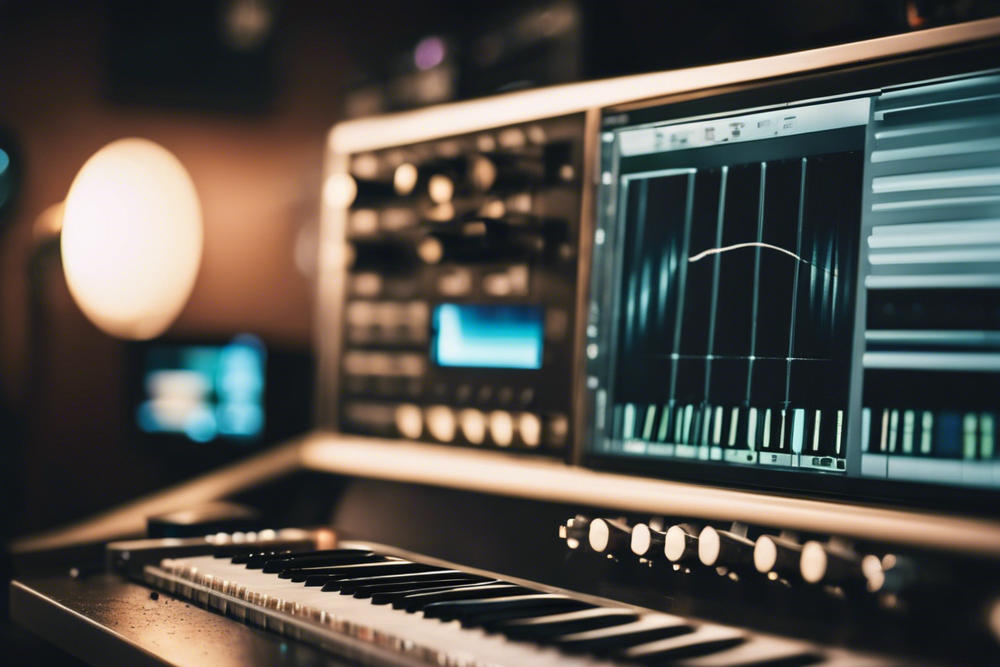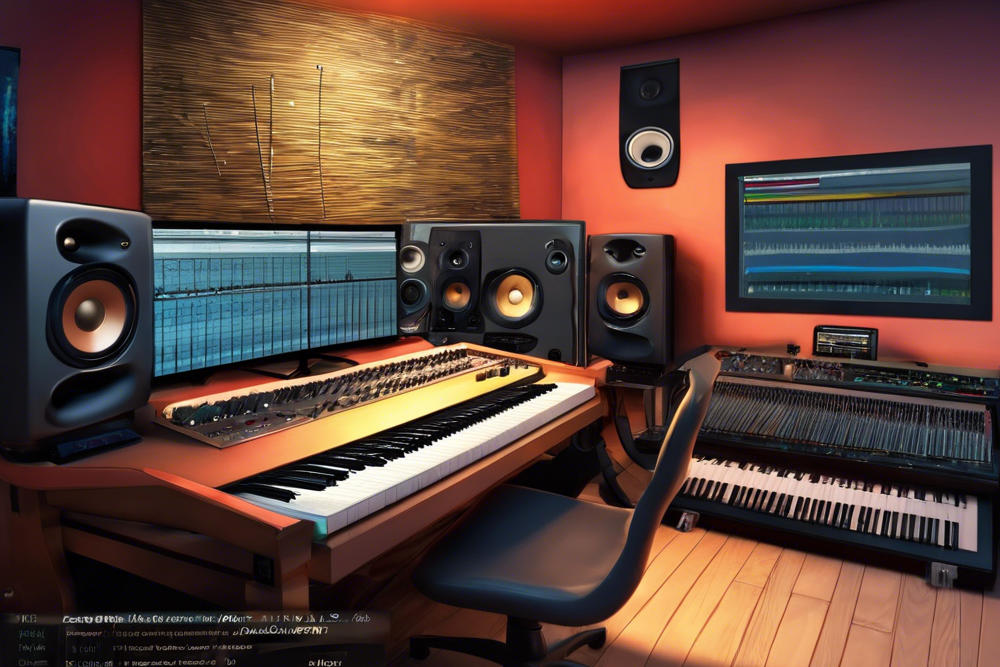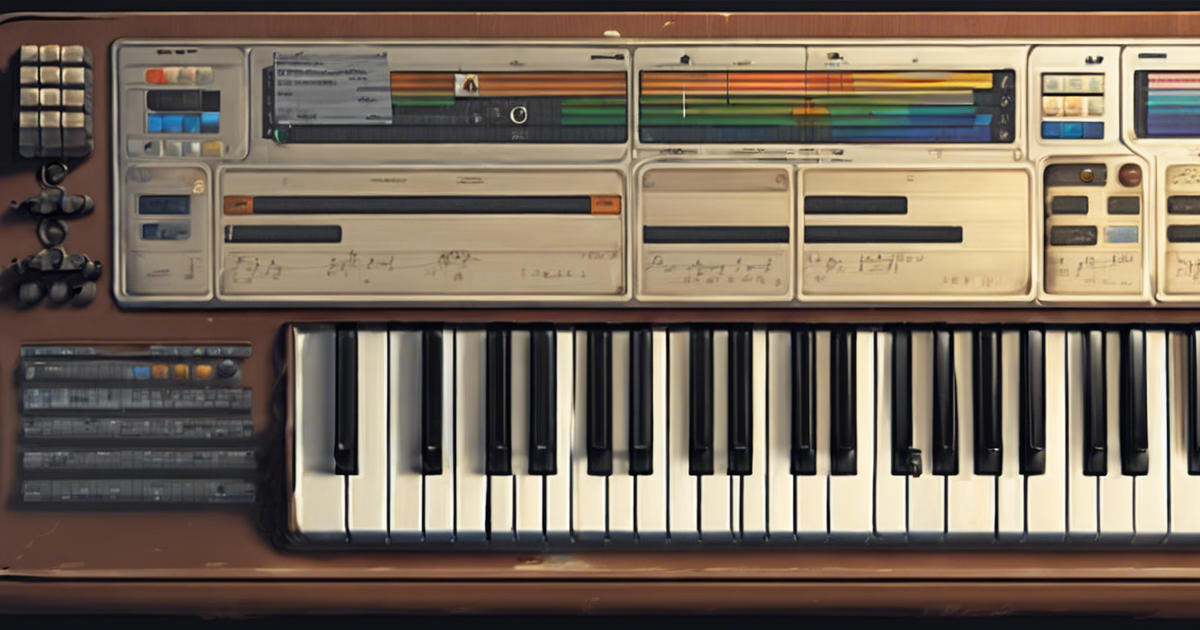Estimated reading time: 9 minutes
Introduction
As a musician, I’ve always been fascinated by the intricacies of music and how it all comes together. One aspect that has always intrigued me is quantization. It’s a term that gets thrown around a lot in the music production world, but what does it really mean? In this article, I’ll demystify the concept of quantization in music and explain why it is such a powerful tool in music production.
Table of contents
- Introduction
- Understanding Musical Notes and Timing
- What is Quantization and Why is it Used in Music?
- Exploring Different Note Divisions and Resolutions
- The Quantization Process and its Settings
- Strict Quantization vs. Preserving Human Timing
- The Power of Audio Quantization
- Utilizing the Swing Parameter for a Unique Feel
- Quantization in Different Musical Genres
- Tips for Using Quantization Effectively
- The Debate Around Quantization and Musical Authenticity
- Conclusion: Embracing Quantization as a Powerful Tool in Music Production
- FAQs
Understanding Musical Notes and Timing
Before we dive into the world of quantization, let’s first understand the basic building blocks of music – musical notes and timing. In music, notes represent the pitch or tone of a sound, while timing refers to when those notes are played. Musical notes are typically represented by symbols such as quarter notes, sixteenth notes, and eighth notes, each having a different duration.
What is Quantization and Why is it Used in Music?
Quantization in music refers to the process of aligning musical notes to a musical grid or a predefined rhythmic pattern. It ensures that the notes played are perfectly in time with the beat, eliminating any timing discrepancies. This is achieved by adjusting the start and end points of each note to the nearest beat or grid point.
Quantization is used in music production to improve the overall timing and groove of a musical performance. It helps to tighten up loose or inconsistent timing, making the music sound more polished and professional. It is especially useful when working with digital audio workstations (DAWs) where individual notes can be easily manipulated.
| Aspect | Description |
|---|---|
| Definition | Aligning musical notes to a rhythmic grid or pattern to ensure precise timing and eliminate timing errors. |
| Purpose | Improves overall timing and groove of musical performances. |
| Benefits | – Corrects timing discrepancies. <br> – Creates a polished, professional sound. |
| Application | Used extensively in digital music production (DAWs) and live performances to enhance musical accuracy. |
| Importance in Music | Enables tighter, more synchronized musical compositions and recordings. |
Exploring Different Note Divisions and Resolutions
In the world of quantization, note divisions and resolutions play a crucial role. Note division refers to the length of each note, while resolution determines the smallest unit of time that can be quantized. For example, a 16th note division means that each beat is divided into 4 equal parts, while an eighth note resolution means that the smallest unit of time that can be quantized is an eighth note.
By adjusting the note division parameter and resolution settings, musicians and producers can achieve different rhythmic feels and grooves. A higher note division parameter and resolution setting will result in a tighter and more precise quantization, while a lower setting will preserve more of the original timing and human feel.

The Quantization Process and its Settings
Now that we understand the basics of quantization, let’s explore the quantization process and its settings. In most DAWs, quantization is done through a quantization panel or menu. The user can select the desired note division and resolution settings, as well as the quantization strength.
The quantization strength determines how closely each note will be aligned to the nearest beat or grid point. A higher quantization strength will result in a stricter quantization, while a lower strength will allow for more flexibility. It’s important to find the right balance between precision and natural feel when setting the quantization strength.
| Setting | Description |
|---|---|
| Note Division | Determines the length and duration of each note, such as quarter notes, eighth notes, etc. |
| Resolution | Defines the smallest unit of time that can be quantized, e.g., 16th note, 8th note, etc. |
| Quantization Strength | Controls how closely notes are aligned to the grid or beat, ranging from subtle to strict alignment. |
| Application in DAWs | Typically adjusted using quantization panels or menus within digital audio workstations (DAWs). |
| Importance in Production | Crucial for refining timing, achieving rhythmic precision, and enhancing overall musical coherence and groove. |
Strict Quantization vs. Preserving Human Timing
One of the ongoing debates in the music production community revolves around strict quantization versus preserving human timing. Some argue that strict quantization can make music sound robotic and lacking in emotion, while others believe that it is essential for achieving a tight and polished sound.
The truth lies somewhere in between. While strict quantization can be useful for genres that require a precise and mechanical feel, it’s also important to preserve the human element in music. Some imperfections and nuances in timing can add character and emotion to a musical performance. Finding the right balance between strict quantization and preserving human timing is key.
| Aspect | Strict Quantization | Preserving Human Timing |
|---|---|---|
| Definition | Aligns notes precisely to a rhythmic grid or pattern, resulting in consistent timing. | Retains natural variations in timing and feel, reflecting the nuances of human performance. |
| Musical Effect | Can sound robotic or mechanical, lacking human emotion and expression. | Adds warmth, emotion, and character to the music, maintaining a more organic feel. |
| Genre Suitability | Well-suited for electronic music genres requiring precise, machine-like rhythms. | Often preferred in genres like jazz, blues, and soul where a looser, more expressive feel is desired. |
| Use in Production | Useful for achieving a polished, radio-ready sound with tightly controlled timing. | Allows for a more dynamic and nuanced musical expression, capturing the essence of live performance. |
| Balancing Approach | May require adjustments (e.g., swing parameter) to introduce subtle variations and avoid rigidity. | Requires skillful execution to maintain coherence and avoid excessive fluctuations in timing. |
The Power of Audio Quantization
So far, we’ve been discussing quantization in the context of MIDI notes. However, quantization can also be applied to audio recordings. Audio quantization involves aligning individual notes or beats in an audio recording to the nearest grid or beat, just like MIDI quantization.
Audio quantization can be a powerful tool for fixing timing issues in recorded performances. It allows musicians to correct small mistakes or inconsistencies without having to re-record the entire part. It’s a time-saving technique that can greatly enhance the overall quality of a recording.
Utilizing the Swing Parameter for a Unique Feel
In addition to note division, resolution, and quantization strength, many DAWs also offer a swing parameter. The swing parameter introduces a subtle time delay or shuffle to the even grid-based quantization, resulting in a unique and groovy feel.
The swing parameter is especially popular in genres such as jazz, funk, and hip-hop, where a laid-back and syncopated rhythm is desired. By adjusting the swing parameter, musicians can add a swing or shuffle feel to their quantized beats, bringing them to life and making them groove in a distinct way.

Quantization in Different Musical Genres
Quantization is a versatile technique that can be used in various musical genres. In electronic dance music (EDM), quantization is often used to achieve a precise and tight rhythm, creating the driving beats that make people dance. In pop music, quantization helps to ensure that the vocals and instruments are perfectly in sync, resulting in a polished and radio-ready sound.
On the other hand, genres like jazz and blues often embrace a more loose and organic feel, where strict quantization may not be suitable. However, even in these genres, subtle quantization can be used to tighten up certain elements of a performance while still preserving the overall human feel.
| Musical Genre | Role of Quantization |
|---|---|
| Electronic Dance Music | Essential for creating precise, driving beats and rhythmic patterns that are characteristic of the genre. |
| Pop Music | Ensures tight synchronization between vocals, instruments, and backing tracks for a polished, radio-ready sound. |
| Jazz | Used more subtly to preserve the organic, improvisational feel while tightening rhythmic elements as needed. |
| Funk | Helps establish a tight, funky groove by aligning instruments and emphasizing rhythmic precision. |
| Hip-Hop | Incorporates quantization to achieve a consistent, rhythmic foundation for vocals and sampled beats. |
| Classical Music | Minimal use of quantization, often focusing on natural timing and expressiveness of live instrumental performances. |
Tips for Using Quantization Effectively
Here are some tips to help you use quantization effectively in your music production:
- Experiment with different note divisions and resolutions to find the rhythmic feel that suits your music.
- Adjust the quantization strength to strike a balance between precision and human feel.
- Use the swing parameter to add groove and character to your quantized beats.
- Be mindful of the musical genre you’re working in and tailor your quantization settings accordingly.
- Don’t be afraid to embrace imperfections and preserve some of the human timing if it adds emotion and character to your music.
The Debate Around Quantization and Musical Authenticity
The use of quantization in music production has sparked a debate about musical authenticity. Some argue that quantization takes away the natural and expressive elements of a performance, making it sound artificial. Others believe that quantization is simply a tool that can be used creatively to enhance the music.
Ultimately, the decision to use quantization or not is a matter of personal preference and artistic vision. Some musicians prefer a more organic and raw sound, while others strive for a polished and precise production. The important thing is to be aware of the potential effects of quantization and make an informed decision based on the desired outcome.
Conclusion: Embracing Quantization as a Powerful Tool in Music Production
In conclusion, quantization is a powerful tool in music production that allows musicians and producers to achieve precise timing and polished performances. While it can be a controversial topic in terms of musical authenticity, it’s important to recognize that quantization is simply a tool that can be used creatively.
By understanding the concepts of note division, resolution, quantization strength, and the swing parameter, musicians can harness the power of quantization to enhance their music. Whether it’s creating tight EDM beats or adding a subtle swing to a jazz performance, quantization offers endless possibilities for creative expression.
So, next time you’re working on a music production, don’t be afraid to experiment with quantization. Embrace it as a powerful tool in your arsenal and let it help you achieve the perfect timing and groove in your music.
Related Posts
- How to Make MIDI Files: A Step-by-Step Guide for Beginners
- What Does Quantize Mean in Music – Unlocking the Rhythm
- What is an Interlude in an Album? Unraveling the Musical Magic Between Tracks
- What is FX in Audio Mixer: Understanding Effects in Sound Production
FAQs
Quantization in music refers to the process of aligning musical notes to a musical grid or a predefined rhythmic pattern.
Quantization works by adjusting the start and end points of each note to the nearest beat or grid point.
No, quantization can be used in various musical genres to achieve precise timing and polished performances.
It can, but it depends on the settings and the desired outcome. Quantization can be adjusted to preserve some of the human timing and feel.
Yes, audio quantization allows musicians to fix timing issues in recorded performances without having to re-record the entire part.
